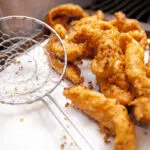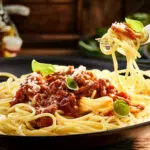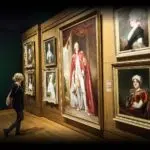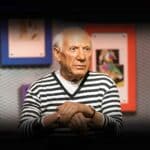Pablo Picasso, born October 25, 1881, was a Spanish painter, sculptor, printmaker, ceramicist, and stage designer. Overall, he is known to be one of the most influential and innovative artists of the 20th century, introducing the world to the concept of ‘cubism.’ Over the span of his lifetime, Picasso never stopped developing his style and continued to surprise the art world with one artwork after another. From an early age, Picasso started showing his brilliance at the beginning of the 20th century. He experimented with different styles and techniques, especially after he saw the works of Henri Matisse, who was considered his rival. To make his journey of art easier to understand, Picasso’s work was categorized into periods, including the Blue Period, the Rose Period, the African-influenced Period, Analytic Cubism, and the Crystal Period. With many prolific artworks under his belt, Picasso received great fortune and a reputation as one of the most important figures in 20th-century art. Care to learn more about one of the greatest artists of all time? Read on because we have all the information about Picasso right here!
Fast Facts
Full Name:
Pablo Ruíz Picasso
Nickname:
Pablo Picasso
Birth date:
October 25, 1881
Death date:
April 08, 1973
Age:
91 years, 5 months
Zodiac Sign:
Scorpio
Height:
5' 4"
Net Worth:
$250.0 million
Background
Pablo Picasso was born in Málaga, Spain, on October 25, 1881, to María Picasso y López and Don José Ruiz y Blasco. His father was a painter and art teacher, someone who played a big part in Picasso’s early interest in art. As a child, he was not the brightest student, but he was a prodigy at drawing. His father taught him how to draw. By the time he was 13, Picasso’s skill surpassed that of his father. Sometimes, for being a bad student, his parents would send him to a bare cell with only a bench to sit on. Surprisingly, Picasso never felt severely punished because he always brought a sketch pad with him to draw on. The family soon moved to Barcelona in 1959, where the 14-year-old Picasso would enroll in the city’s School of Fine Arts. He was accepted even though he was several years younger than the other students there. Unfortunately, he liked to skip classes as he thought the school had too many formalities when it came to art. This happened again in 1897 when he attended the Royal Academy of San Fernando in Madrid. In 1899, Picasso moved back to Barcelona, where he befriended a social circle filled with artists. At that time, Picasso was heavily inspired by anarchic and radical ideas, which triggered him to go on a series of experiments in art.Although his style went through a series of transformations, Picasso claimed that it was never for the sole reason of reinventing himself. In other words, he never thought about it as a series of radical shifts. He stated that it was all about finding the best technique to achieve the effect or goal he had in mind for an art piece. He kick-started his career with the Blue Period, which was named after the color that covered a lot of his paintings over those years (1901-1904). At that time, Picasso was depressed over the death of his best friend, Carles Casegemas. Some of his most famous paintings during this period were painted in 1903, including “Blue Nude,” “La Vie,” and “The Old Guitarist.” Picasso then moved to another period called the Rose Period, which was deeply inspired by his romantic involvement with a model named Fernande Olivier. He got over his depressive years and started using colors, including beige, pink, and red (1904). The Rose Period was then followed by the African-influenced Period. It all started after he saw an African artifact at the Palais du Trocadéro. What came out of this wave of inspiration were pieces including “Les Demoiselles d’Avignon” (1907), “Nude with Raised Arms” (1907), and “Three Women” (1908). There are ideas that he developed during this time that were applied to his Cubist period. The Cubist period first started with his Analytic Cubism style, in which Picasso and Georges Braque started analyzing shapes (1909-1912). Later on, the style was further developed into Synthetic Cubism, in which he started incorporating organic materials into his paintings. The geometric shapes he used became even more complex (1912-1919). During his experimentation with the Surrealism style, Picasso made an anti-war piece called “Guernica,” which expressed his outrage toward the Nazi German attack on Guernica. By the end of World War II, Picasso became more political, joining the Communist Party. By then, he was also considered an international celebrity. A year before his death, Picasso created one of his most moving pieces called “Self Portrait Facing Death,” a drawing with only a pencil and crayon.Picasso was known for his multiple relationships with his girlfriends, mistresses, and prostitutes. In 1918, he married ballerina Olga Khokhlova and had a son together. The pair separated, and Picasso later married Jacqueline Roque. Even when he was married to Khokhlova, Picasso had another relationship with Marie-Thérèse Walter that resulted in him having a daughter. In between those relationships, Picasso was also involved with fellow artist Dora Maar, to whom the poet Paul Éluard introduced Picasso. During that relationship, Picasso had an affair with Françoise Gilot, with whom he had two children.
Career timeline
Picasso moves back to Barcelona, where he starts getting inspired by anarchist and radical ideologies, leading him on a lifelong journey of art experimentation.
Picasso starts what is known as the Blue Period, where his paintings are somber and filled with blue and blue-green colors.
Picasso experiences love, which inspires him to use warmer colors in his paintings, including beige, pink, and red.
Picasso creates “Les Demoiselles d’Avignon,” one of his most controversial pieces, inspired by an African artifact from the Palais du Trocadéro.
Picasso starts developing the cubism style, which is considered his best contribution to the art world.
Picasso creates one of the most moving anti-war artworks of all time, “Guernica,” depicting his anger against the Spanish Civil War.
Pablo Picasso FAQs
What is Pablo Picasso’s most expensive painting?
It was his “Women of Algiers (Version O)” which was sold for $179,365,000 at an auction in New York.
Did Pablo Picasso drink?
Picasso was a drunk who was often high on absinthe, a liquor that gave him much inspiration for his paintings.
What did Picasso eat?
Picasso ate simple food such as fresh fish, fruits, and vegetables, which is a big reason why he lived to the age of 91.
5 Surprising Facts
-
His 23-word name
In Andalusian custom, Picasso was baptized with a large list of names, in which he was given the names of many saints and relatives.
-
Picasso’s first word
One report mentioned that his first word was 'piz,' which means 'pencil' in Spanish.
-
Picasso’s iconic shirt
In most photographs, Picasso was shown wearing a striped shirt, which was designed by Coco Chanel.
-
He had a difficult birth
It was reported that Picasso was a weak baby at the time of his birth that the nurse thought he was stillborn, but a doctor named Don Salvador saved him.
-
His first job was in Paris
Picasso signed his first art deal with Pere Menach, who paid him 50 francs every month.
Why We Love Pablo Picasso
-
He constantly experimented
Even at the height of his career, Picasso never got complacent or stopped experimenting with different styles that applied well to his paintings. He could constantly communicate his ideas through his outstanding artwork.
-
He was an innovator
As previously stated, Picasso developed a style called Cubism, which was an important moment in the art world. It gave birth to various art movements, including Surrealism.
-
He believed in his work
Ever since an early age, Picasso was taught to always believe that he was destined for greatness. He once confidently recalled, "When I was a child, my mother said to me, 'If you become a soldier, you'll be a general. If you become a monk, you'll end up as the pope.' Instead, I became a painter and wound up as Picasso.
Pablo Picasso’s birthday dates
| Year | Date | Day |
|---|---|---|
| 2022 | October 25 | Tuesday |
| 2023 | October 25 | Wednesday |
| 2024 | October 25 | Friday |
| 2025 | October 25 | Saturday |
| 2026 | October 25 | Sunday |































